Common Spray Problems
From nozzle wear to improper cleaning, many issues in your operations can affect spray nozzle performance and contribute to unnecessary costs. It’s important to understand all the factors that could put your operations — and your profitability — at risk.
Erosion / Wear
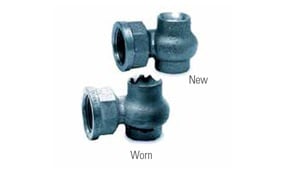
Gradual removal of nozzle material enlarges the nozzle orifice and internal flow passages — increasing flow and spray droplet size, decreasing pressure, and distorting the spray pattern. Learn more about detecting nozzle wear >
Corrosion
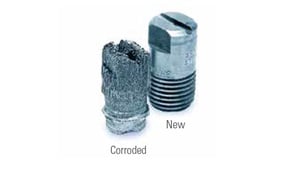
Chemicals in the sprayed material or environment might cause nozzles to break down. Air atomizing nozzles are especially sensitive to corrosion. Even small amounts of corrosion negatively impact drop size and uniformity.
High Temperature
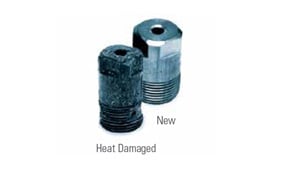
Certain liquids must be sprayed at a higher temperature or in high-temperature environments, which might cause heat damage to nozzles not made of high-temperature-resistant materials.
Caking / Bearding
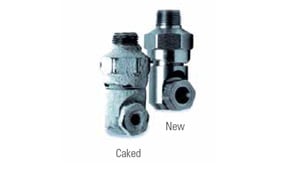
Liquid evaporation can cause build-up of material on the inside or outer edges of nozzle orifices, obstructing flow and affecting nozzle performance. Air atomizing nozzles are especially sensitive to this kind of damage.
Accidental Damage
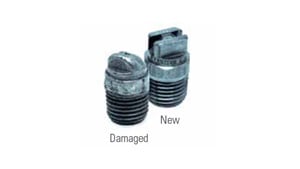
Using improper cleaning tools and dropping nozzles during installation or operation can result in damage that affects nozzle performance.
Clogging
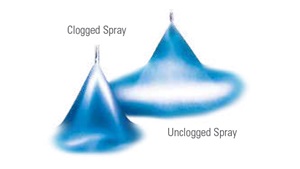
Unwanted solid particles can block the nozzle orifice, restricting flow and disturbing the spray pattern.
Improper Assembly
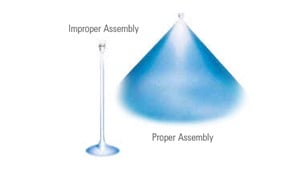
Misalignment of internal components such as gaskets, O-rings and internal vanes can cause leakage and inefficient spray performance. Likewise, overtightening nozzle caps on bodies can strip threads, causing similar results.

